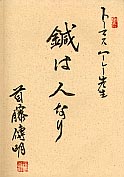|
|
Tom Hurrle practices Japanese styles of acupuncture in the Lincoln Square neighborhood of Chicago. He uses Shakuju and Japanese Meridian Therapy, methods based on refined palpation and delicate needle technique. He is a past president of the Illinois Society of Acupuncturists, and teaches at Pacific College of Health Sciences. Some Context: Traditional Japanese Acupuncture
They attracted followers because of their clinical success. The method known as Meridian Therapy blossomed in the ’50s and ’60s. Senior teachers began to come to the U.S. in the ’80s and ’90s. The Toyohari Association of Tokyo started a wonderful training program in the early ’90s. The delightful Shudo Denmai Sensei published a fine book Introduction to Meridian Therapy, translated by Stephen Brown of Seattle, and has taught in the U.S. [See image above: Shudo Sensei autographed Introduction to Meridian Therapy for me at his 1999 Hawaii seminar. The inscription reads “Acupuncture is your heart.” Meridian Therapy offers good results using very gentle stimulus. This is a particular advantage in treating people who do not tolerate “de Qi,” a strong sensation at the point of needle insertion sought in Traditional Chinese Medicine.
|

 Traditional Japanese Acupuncture is named for its dedication to ideas originating in early classic texts of Chinese medicine, which came to Japan in the 7th century A.D. One of those texts, the
Traditional Japanese Acupuncture is named for its dedication to ideas originating in early classic texts of Chinese medicine, which came to Japan in the 7th century A.D. One of those texts, the 